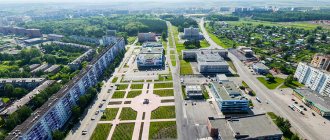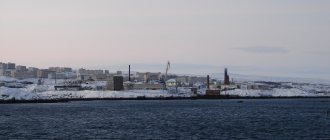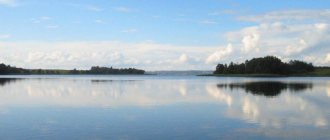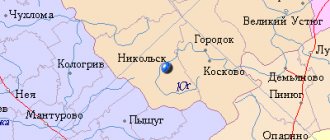Symbolism
The flag and coat of arms of the Magadan region constitute the official symbols of the Magadan region as a subject of the Russian Federation in accordance with the law of the Magadan region dated December 28, 2001 No. 219-oz “On the flag and coat of arms of the Magadan region”
Coat of arms of the Magadan region
Flag of the Magadan region
Execution of voters' orders
Action plan for the implementation of voters' orders to the governor of the Magadan region and executive authorities of the Magadan region, which have great social significance
Municipal entity "City of Magadan".pdf (310.92 KB)
Municipal entity "Ola city district".pdf (480.41 KB)
Municipal entity "Omsukchan city district".pdf (249.75 KB)
Municipal entity "North-Evensky urban district".pdf (296.08 KB)
Municipal entity "Srednekansky urban district".pdf (233.73 KB)
Municipal entity "Susumansky urban district".pdf (380.26 KB)
Municipal entity "Tenkinsky urban district".pdf (274.72 KB)
Municipal entity "Khasynsky urban district".pdf (454.26 KB)
Municipal entity "Yagodninsky urban district".pdf (298.32 KB)
Climate
The Magadan region belongs to the regions of the Far North. Characterized by a harsh climate. The average annual temperature is minus 2.8 degrees. The duration of winter is from 6 to 7.5 months. There are frequent snowstorms and cyclones, but, as a rule, this is the sunniest time of the year. The thermometer in the central regions of the region drops below minus 40-50 degrees, but in summer the temperature rises to +30 degrees C. The weather on the coast is characterized by frequent fog with drizzle and prolonged rains. A significant part of the territory of the Magadan region is located on the Kolyma Highlands. The mountain systems of the Verkhoyansk and Chersky ranges with peaks reaching 2500 m also extend here. In the valleys you can find relict forests. However, three-quarters of the space is occupied by tundra and forest-tundra. The territory abounds with capricious mountain rivers, streams, and pristine lakes. The main water artery is the Kolyma River. In the northeast, the Magadan region borders with the Kamchatka Territory, in the north with the Chukotka Autonomous Okrug, in the west with the Republic of Sakha (Yakutia), in the southwest with the Khabarovsk Territory, and in the south and southeast it is washed by the waters of the Sea of Okhotsk.
General information about the Magadan region
Distinctive features . “You’ll be with us in Kolyma...” This phrase is familiar to everyone who watched the legendary film comedy “The Diamond Arm.” But probably not everyone knows that the Kolyma River, which was discussed, originates in the Magadan region. What is interesting about this region? From the point of view of comfortable living - nothing. The region belongs to the regions of the Far North, where almost the entire territory is a permafrost zone. The Yakuts have long lived here, and if not for the Russian Cossacks who explored Siberia and the Far East, no one would have known about the Kolyma lands.
The nature of Kolyma has its own unique charm. Photo by Bal VV (https://fotki.yandex.ru/users/bal-vv/)
The Magadan region was formed in 1953, separating from the Khabarovsk region into an independent region. Economic activity on these lands began in the 30s of the last century, when the Dalstroy trust began developing mineral deposits.
First of all, the Soviet Republic was interested in gold, deposits of which were found in these parts. Prisoners were used as workers, and the Kolyma Islands of the Gulag archipelago were notorious for the most difficult working conditions. By the will of fate, many famous and outstanding people ended up here as political prisoners over the years.
For example, at the Maldyak gold mine, in the Susumansky district, in 1939, the outstanding scientist-designer, father-creator of the first Soviet space rockets, Sergei Pavlovich Korolev, served his sentence. He miraculously managed to survive at this mine, which received the nickname “Death Valley”: more than half of the prisoners brought there died within the first six months.
In the 1950s, prison labor was abandoned. But even now, mining remains the main pillar of the region’s economy, accounting for almost a third of the gross regional product. Another important area is electricity production. There are three large hydroelectric power stations in the Magadan region - Kolyma, Arkagalinsk and Ust-Srednekanskaya.
In Magadan there is a sea trade port and fishing enterprises producing 18% of the region's production. In general, there’s not much to go around, but there is at least some choice of where to go to work.
Geographical location . Many people dream of living by the sea. But it is unlikely that such a prospect would cause delight if this Sea is the Okhotsk Sea. It is on its shores that the Magadan region is located - one of the least suitable regions of the Far East for life. The neighbors of the Magadan region are: in the south - Khabarovsk Territory, in the north - Chukotka District, in the west - Yakutia, in the east - Kamchatka Territory. The Magadan region is part of the Far Eastern Federal District.
Jack London Lake. Photo by nataly (https://fotki.yandex.ru/users/nataly2011g/)
Most of the surface of the Magadan region is covered with mountains. The main massifs are the Chersky Range and the Kolyma Highlands. There are also plains, but exclusively on the coast, in river beds. It must be said that there are a lot of rivers in the Magadan region, the largest of them is the Kolyma, into which most of the other long rivers flow. And only a small part of the relatively large rivers flows into the Sea of Okhotsk.
Population. The Magadan region is one of the most sparsely populated regions of Russia. With 152,358 inhabitants, it is in 81st place in the ranking of regions by population. The population density is also one of the lowest - 0.33 people. per 1 sq. km. Most of the region's population lives in Magadan.
Kadykchan is a ghost town in the Susumansky district. Photo by kadykchan (https://fotki.yandex.ru/users/kadykchan/)
Under the USSR, the settlement of the region proceeded at an accelerated pace, increasing by more than 100 thousand people every ten years since the 1950s. The population peaked in 1989 with 542,868 people. But then the market made its own adjustments, and a massive outflow of the population began, as a result of which the population decreased by almost four times. Some settlements, like Kadykchan, have become extinct “ghost towns.” But still, even the current number of residents is many times higher than in 1926, when only 7 thousand people lived in the region.
Naturally, such dynamics are determined solely by the number of migrants. As for the natural increase or decrease of the population, in the Magadan region it is zero - the mortality rate is equal to the birth rate.
By national composition, 81.49% are Russians, 6.28% are Ukrainians. In third place in number is one of the indigenous small peoples of the north - the Evens (1.71%). Other indigenous peoples are the Koryaks and Itelmens, but there are even fewer of them.
The peculiarities of life in the harsh conditions of the Magadan region leave their mark on the people living here. Basically, adventurers by nature come here, people who are “not like everyone else,” who prefer the harsh beauty of northern nature to the benefits of civilization.
Crime . The crime rate in the Magadan region is quite high. In the ranking of regions by the number of crimes committed, the region ranks 11th. Here we must take into account local specifics - the abundance of places of detention, camps, the presence of former prisoners who remained to live out their lives here, drunkenness... In general, there are plenty of crimes here, and they are very different. Magadan itself also has quiet, relatively prosperous areas. But even there there are thefts and domestic crimes.
Unemployment rate. The Magadan region is one of the leaders in terms of unemployment. In 2012, it was equal to 3.41% - 6th place in the ranking of regions of the Russian Federation. Of course, the specifics of the region explain such a low unemployment rate. Locals simply cannot survive in such conditions if they sit idle, and those who come here from other regions already have a place of work, otherwise what is the point in such a move?
And they come here for a long ruble. The average salary in the Magadan region is 49,448 rubles. But there are industries where wages are much higher than even this indicator. For example, in fishing it is 54.8 thousand rubles, in mining (not counting fuel and energy) - 74.3 thousand rubles, in the production of electrical equipment - 67 thousand. And the leader is the financial sector with an average salary of 97.7 thousand . rub. per month. Of course, to lure a competent specialist to such a region requires good money. Since there are simply no other arguments for moving here.
Here gold is shoveled not with a shovel, but with an excavator bucket: the Congo deposit
Real estate value . Due to the fact that the population of both the region and Magadan has decreased significantly, housing prices are not as high as they could be, given the value of local salaries. Offers for the sale of one- and two-room apartments for 1.7 - 2 million rubles are found quite often, and in various areas of the city. Obviously, people continue to leave here and try to sell their homes for at least some money. Good, prestigious housing in Magadan costs more - from 4 million rubles. and higher.
Street in Susuman. Photo by shandi (https://fotki.yandex.ru/users/shandi/)
The climate of the Magadan region is sharply continental. This is one of the regions of Russia where the climate is the most severe. The average annual temperature in the region is −2.8°C, and in the Kolyma basin this figure is much lower: −14°C. In summer, if you can call it that, the thermometer rises, crossing the zero mark. Again, in the Kolyma region there are sometimes high temperatures in the summer - up to +34°C. But there, in Omolon, cold records were also recorded in winter: −67°C. In Magadan the situation is better, but even there in summer the average temperature is about +12°C, and the climate is similar to that of Murmansk.
Due to the proximity of the Sea of Okhotsk over the Magadan region, there is a constant struggle between marine and continental air masses, accompanied by heavy precipitation. Their average annual quantity reaches 600 mm per year.
Natural resources
The Magadan region, known as the “Golden Kolyma”, is one of the largest regions of the Russian Federation in terms of territory and rich in mineral resources. The region is one of the ten largest regions of the country in terms of potential mineral resources, and is the largest gold-bearing province in the world, located within the northwestern fragment of the planetary structure - the Pacific ore belt.
The total proven mineral reserves of the Magadan region as of January 1, 2021 are: gold - 2.45 thousand tons (including in alluvial deposits - 160.5 tons), silver - 12.5 thousand tons, tin - 66 .6 thousand tons, hard coal - 569.0 million tons and brown coal - 1.6 billion tons. In addition, there are proven reserves of molybdenum (3.2 thousand tons), cobalt (187.8 tons), tungsten (2.1 thousand tons), lead (144.1 thousand tons), zinc (103.2 thousand . T). There are significant occurrences of copper and iron in terms of resources. Rhenium is present in copper-molybdenum deposits and occurrences.
There is a wide range of common (building and facing stones; sand-gravel mixture and building sand; carbonate, ceramic and expanded clay raw materials, peat) and non-metallic (basalts, volcanic ash, gypsum, zeolites, cement raw materials) minerals.
Industrial development of the Magadan region began in 1928. During this time, the region produced: about 3230.0 tons of gold, more than 16 thousand tons of silver, about 72.5 thousand tons of tin, more than 83 million tons of coal. Since 2012, lead mining has been resumed in the region (as a by-product of silver mining from silver deposits). During 2012-2020, 34.9 thousand tons of lead were mined.
The largest enterprises mining placer gold are Susumanzoloto JSC, Arbat Concern (Congo LLC and Energia LLC), GDK Berelekh JSC, Status LLC, Krivbass LLC, T-Cement LLC ", LLC "Rise", LLC "Polevaya".
Enterprises that mine ore gold in the Magadan region are JSC Polyus Magadan, LLC Omolonskaya Zolotorudnaya, which are subsidiaries of JSC Polymetal, JSC ZRK Pavlik, JV JSC Omsukchanskaya GGK, LLC Electrum Plus, Concern "Arbat" (LLC "Nyavlenga" and LLC "Agat").
About 98% of silver in the region is mined by the enterprises of Magadan Silver JSC and Omolon Gold Mining Company LLC (subsidiaries). 3 prospecting licenses were received for the Talnikovaya promising area -1, Talnikovaya promising area -2 and Keytevan promising area, included in the Priokhotskaya perspective area. The resource potential of the three exploration areas (if confirmed) is estimated at about 5 million tons of copper. Since 2022, geological exploration work has been carried out in accordance with project documentation.
One of the promising areas for the development of the mining industry is the implementation of a project for the search and industrial development of oil and gas fields in the Magadan shelf zone. The forecast hydrocarbon resources in the areas of the Primagadan shelf of the Sea of Okhotsk amount to about 2.6 billion tons of conventional hydrocarbons. holds licenses for the right to use subsoil in the Magadan-1,2,3 areas on the shelf of the Sea of Okhotsk for the purpose of geological study, exploration and production of hydrocarbons. The management of geological exploration in the Magadan-1 license area is carried out by Magadanmorneftegaz LLC, and in the Magadan-2 and Magadan-3 areas by RN-Shelf-Arctic LLC. Magadanmorneftegaz LLC and RN-Shelf-Arctic LLC are subsidiaries.
On November 13, 1931, by Resolution of the Council of Labor and Defense of the USSR No. 516, the State Trust for Road and Industrial Construction in the Upper Kolyma Region - Dalstroy
. The trust is entrusted with the development, search and exploration of gold deposits in the Olsko-Seymchansky district of the Far Eastern Territory and the construction of a highway from Nagaev Bay to the gold mining area. The trust administration was located on the shore of Nagaev Bay in the village. (since 1939 city) Magadan. In October 1932, by decision of the Central Committee of the All-Union Communist Party of Bolsheviks, the area where Dalstroy operated was allocated as an independent territory that was part of the Far Eastern Territory. The structure of Dalstroi was quite complex. Already at an early stage, the Mining Department and the Road Construction Department were created within it. In September 1935, on the basis of the first of them, the Northern and Southern Mining Directorates (GPU) were organized. In addition to the Road Construction Department, several more construction departments were organized over the years - Geological Exploration, Motor Transport, Subsidiary Farms Department, Highway Department, Kolyma-Indigirsky River Shipping Company Department, management of transshipment bases in Nakhodka, in the village. Osetrovo (Irkutsk region) and in Vanino Bay (see, for example, MVD Avenue No. 00454 dated 05.20.52). All these and some other production units of Dalstroy were served by prisoners of the North-Eastern forced labor camp (SVITL), organized by OGPU order No. 287/s dated April 1, 1932 and from the moment of its organization subordinated to Dalstroy. Formally, SVITL was also under the jurisdiction of the OGPU PP for the DCK (after the liquidation of the OGPU - UNKVD for the DCK), which, in turn, was subordinate to the GULAG on issues related to the work of the camp.
In memoirs and scientific literature there are often references to numerous “corrective labor camps” that served the production departments listed above. However, the camp units located on the territory of the corresponding production departments were not independent camps subordinated directly to Dalstroy, but only parts of a single NORTHEASTERN ITL. Dalstroy's main production specialization was gold and tin mining. In addition, the headquarters was engaged in the extraction of tungsten, cobalt, coal, building materials and other minerals, geological exploration, road, civil and industrial construction, maintenance and repair of roads, had industrial enterprises, shipping companies, its own subsidiary agriculture, conducted logging, and transported goods. and so on.
Economy
According to preliminary estimates, the GRP of the Magadan region in 2022 increased in comparable prices by 5.2% and amounted to 236.1 billion rubles. In per capita terms, GRP amounted to 1,710 thousand rubles (versus 1,524 thousand rubles in 2022). The index of industrial production in 2020 was 105. The index of agricultural production of all agricultural producers in 2022 was 103.5%, the construction index was 119.5%.
The basis of the regional economy is the mining and energy industries. These industries account for about 95% of annual output; they employ more than 20% of the population, create more than half of the gross added value, and concentrate up to 70% of all investments.
Over the year, gold production increased by 6% and reached 49.1 tons. In terms of gold mining, the Magadan Region is the leader among the subjects of the Far Eastern Federal District, and in the Russian Federation as a whole it ranks second after the Krasnoyarsk Territory. In addition, the region has been the undisputed leader in Russia in silver mining for a number of years. In 2022, the region produced 572.5 tons of silver.
The prospects for the territory are connected with its subsoil, with the identification of new primary deposits of gold and silver, industrial deposits of copper, molybdenum, tin and tungsten.
The energy system of the Magadan region is isolated, is not part of the unified energy system of Russia and has connections only with one energy hub of the Republic of Sakha (Yakutia) - Oymyakonsky ulus. Due to the lack of electrical networks, the centralized power supply system does not include all settlements of the North-Evensky urban district, the villages of Talaya, Atka, Khasynsky urban district, the village of Madaun, Tenkinsky urban district, the villages of Takhtoyamsk, Yamsk of the Olsky urban district.
These settlements have local systems for generating electricity and heat. Electricity in them is produced at diesel power plants and serves as the basic type of energy that ensures the functioning of heat and water supply systems. Electricity is transported within the boundaries of villages; electricity is not transferred beyond their boundaries.
The construction of the Ust-Srednekanskaya HPP continues in the region, which is intended to operate in cascade with the Kolyma HPP to cover the electrical loads of the Magadanenergo Central Power Plant and the border areas of the Republic of SAKH (Yakutia).
Construction of the hydroelectric power station began in 1991; Hydraulic units No. 1 and No. 2 were put into commercial operation in 2013. In December 2022, hydraulic unit No. 3 of the Ust-Srednekanskaya HPP was put into commercial operation; commissioning at full capacity is expected to occur by 2025.
In 2022, a 220 KW overhead line Ust-Omchug-Omchak was commissioned to provide power supply to the largest gold mine in Russia at the Natalka deposit
The fishery complex remains significant for the territory. Fisheries are one of the basic industries of the region, the products of which are sold not only on the Russian domestic market, but are also exported to the USA, China, Japan, and the Republic of Korea. The basis of potential aquatic biological resources in the areas of possible fishing and the largest share in the catches of enterprises in the region are pollock, herring, cod, halibut, navaga, flounder, and salmon. Non-fish species include crabs, shrimp, and whelk. Activities in the fishery complex in 2022 were carried out by 95 organizations of various forms of ownership, the largest of which are Tikhrybkom LLC, Magadanryba LLC, Mag-Sea International LLC.
The catch of Magadan fishermen in the waters of the Russian Federation amounted to 69.3 thousand tons, which is 5% higher than in 2022. The largest share in the catches are pollock, herring, salmon species, crabs, and shrimp.
The decrease is due to unfulfilled salmon fishing forecasts. Fishermen were able to catch only 37% of the allocated volumes of pink salmon.
Compared to the previous year, the level of investment activity of fishing organizations increased 2.5 times. There are 2 crab catchers laid down at the Khabarovsk shipyard.
To ensure food security in the Magadan region, projects on import substitution of food products are being implemented. In 2022, as part of this activity in the region, work continues to attract investment in the development of agriculture in the territory, promoting the creation of large modern agricultural facilities. Since 2018, the first stage of the investment project “Reconstruction of a poultry house into premises for keeping and raising 5,000 pigs” has been put into operation. To date, the project has been completed.
In 2022, the implementation of the investment project “Construction of a greenhouse complex in the village of Talaya” began. Currently, the greenhouse has been commissioned and the first products have been produced - strawberries, cucumbers, and green crops.
Passports of municipalities
In order to carry out socio-economic monitoring, ensure a unified approach to analyzing the state of municipalities of the Magadan Region and forming a database for urban districts of the Magadan Region, a form of passport for the municipality of the Magadan Region has been developed.
Passport of the municipal formation "city of Magadan" of the Magadan region.pdf (1793.85 KB)
Passport of the municipal formation "Ola City District" of the Magadan Region.pdf (1478.07 KB)
Passport of the municipal formation "Omsukchansky urban district" of the Magadan region.pdf (1869.25 KB)
Passport of the municipal formation "North-Evensky urban district" of the Magadan region.pdf (664.84 KB)
Passport of the municipal formation "Srednekansky urban district" of the Magadan region.pdf (1766.85 KB)
Passport of the municipal formation "Susumansky urban district" of the Magadan region.pdf (1482.9 KB)
Passport of the municipal formation "Tenkinsky urban district" of the Magadan region.doc (1974 KB)
Passport of the municipal formation "Khasynsky urban district" of the Magadan region.pdf (1511.85 KB)
Passport of the municipal formation "Yagodninsky urban district" of the Magadan region.pdf (1911.68 KB)
Transport
The main transport gateway of the region is the Magadan sea trade port, through which the main flow of cargo arrives. In the city of Magadan there is an international airport through which air passenger and cargo communications are carried out with other regions of the Russian Federation, CIS countries and the Far Abroad. Magadan Airport is authorized to receive more than 50 types of aircraft, including Il 96-300; Airbus A-319, 320, 321, 330; Boeing 767-200, 767-300; Boeing 747; Boeing 757-200, Boeing 777-200, Boeing 777-300.
The length of the network of public roads in the Magadan region is a total of 1,960.608 kilometers, including the 838 km federal road R-504 “Kolyma” from Yakutsk to Magadan.
The road network of regional and intermunicipal roads is 1122.608 kilometers, including:
- “Magadan – Balagannoye – Talon” 151.576 km;
- "Solnechny - Ola" - 31.742 km;
- “Gerba – Omsukchan” - 256.85 km;
- “Palatka – Kulu – Nexikan” - 473.413 km;
- automobile access to the village of Talaya - 31.0 km;
- “Avenirych – Seymchan” - 66.285 km;
- “Sokol – Splavnaya” - 12,491 km;
- car access to the children's health center - 5.811 km;
- “Kolchakovsky Klyuch – Klepka” - 31,110 km;
- automobile access to the village of Snezhnaya Dolina – 5.0 km;
- "Omsukchan - Dukat" - 22.7 km;
- “Kolyma - Omsukchan - Omolon - Anadyr” - 25.3 km.
Regional and intermunicipal roads are under the economic authority of the Ministry of Roads and Transport of the Magadan Region.









